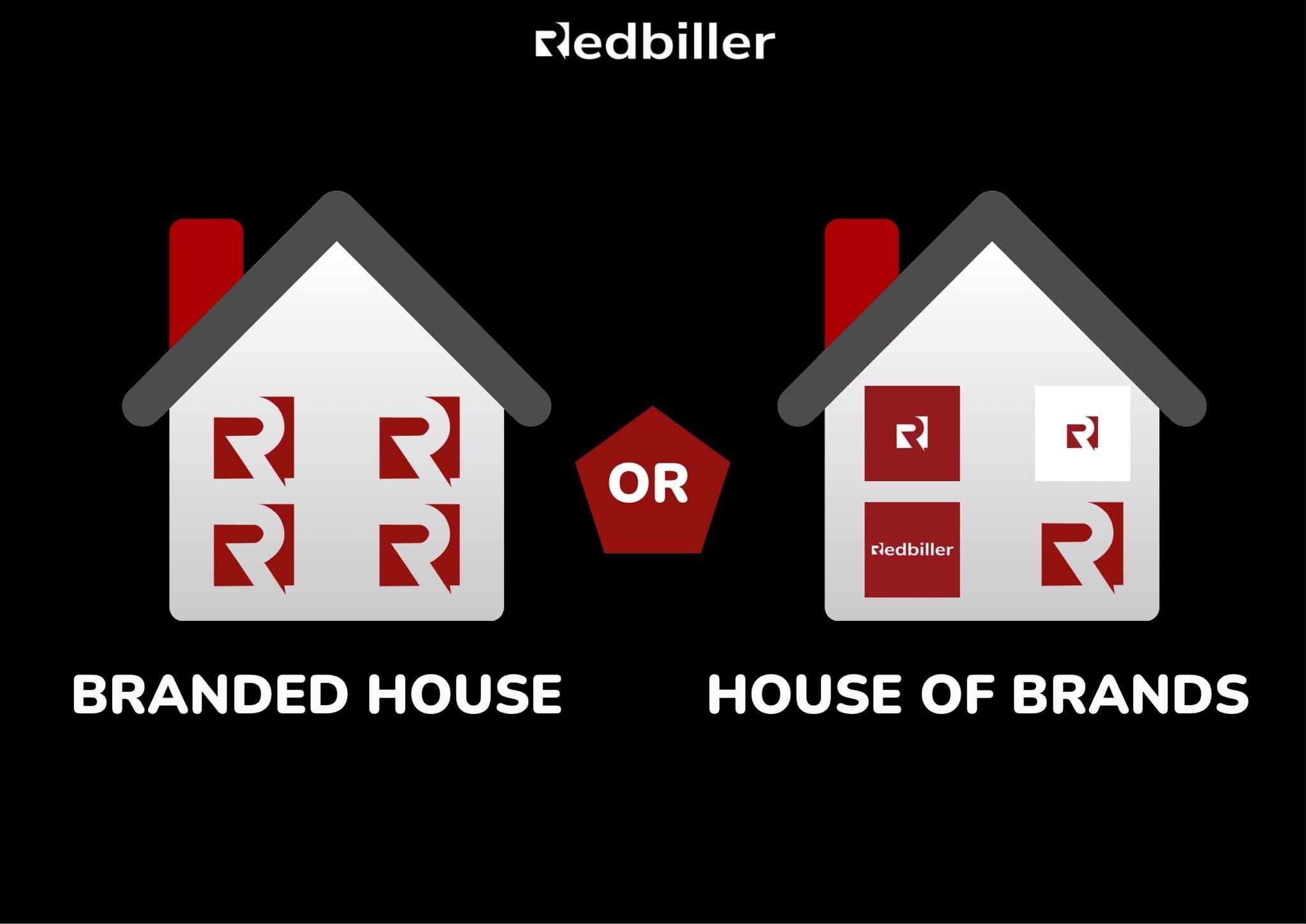As your business grows and your primary product gains more acceptance in the market, the desire to expand your business to offer more products and services come naturally. This might even be in your plan from inception.
You already have a customer base, why not offer more things that they need? Do you merely want a source of income? or do you want to build a legacy?
A legacy makes you look beyond how well you are doing now to how better you can be. In the end, it all boils down to your goals. You should be driven by goals, not tied down to a product or service. When you have answered the above questions, then you can move on to our subject for today.
Branded House or House of Brands is all about using a single identity or multiple identities. But it is not as simple as the definition. The choice of a brand strategy model has a profound impact on the success of your business. It is necessary to have adequate knowledge of both strategies and their implication for business expansion before deciding on which to apply to your business.
Branded House
Branded House is a branding strategy that employes a singular identity for all the products and services of the business. This strategy typically has a parent brand or a primary product that bears the actual brand name. And the other products are treated as an extension of the initial brand.
Despite being different products, all the products are unified under one brand identity and do not have an independent image. It is why chances of success are higher when there is a logical connection between all the products.
The branded house strategy leverages the success of the primary product or the brand to launch a new product in the market. This helps to cut down marketing and branding costs for the company. It also aids market penetration and heightens the public’s perception of the brand. People begin to perceive the brand as a strong, growing and reputable brand. The new products will also bring in new customers for the brand.
One of the best things about the Branded house is that customers are loyal to the brand, so they readily accept products coming from the brand.
But, it is not without its shortcomings. In the mind of people, all the brand's products are one since they share a single identity. Actually, that is the idea. However, it also means that the shortcoming of one product is regarded as the shortcoming of the brand. And it leads to mistrust of the other products of the brand. This negative rub-off can be quite tricky to navigate. It can sometimes lead to the brand dropping that product just to regain customers’ trust and save the remaining products.
House of Brands
House of brands is a branding strategy that employes multiple brand identities for its different products and services. This strategy has a parent company that is usually less known, with several sub-brands bearing no connection to each other in any way. The only connection they have is that they are by the same parent company. The brand identity and management are independent of the other and are largely independent of the parent company.
The House of brands strategy allows you to expand across industries without worrying about the logical connection of the product to each other or the parent company. In most cases, the parent company doesn’t even have a product directly under it. They allow each brand to bear the responsibility of its shortcomings alone. But, it also means that the company cannot leverage the success of one brand to market another -an existing product or a new brand.
The different brand identities allow you to reach people of varying interests. Another advantage is that the parent company can remain out of the public eye and, of course, public criticism.
However, setting up a new brand identity for every new product is not in any way cost-effective. House of brands is expensive to run as different brand identities doesn’t end at a new name and colour but extends to management, localisation, administration, production, distribution and human resource. Also, it can be confusing for customers, especially when they know the parent company. Loyalty is to the product and not to the parent brand.
The choice of a brand strategy should be carefully thought through and decided upon after thorough market research. It should not be based on fantasies or personal preferences. Also, both models have their pros and cons, consider which you can manage best and which one is most suited for the line of products you plan to launch.



